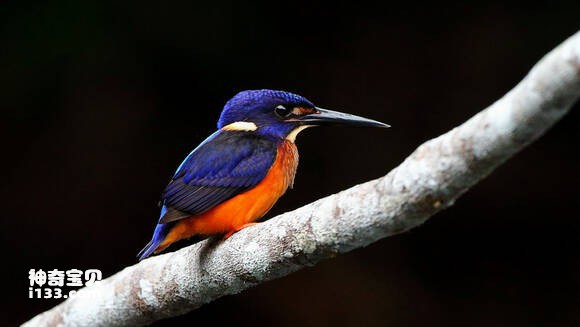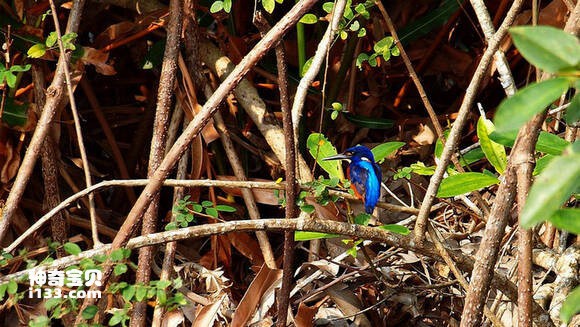Alcedo quadribrachys
IUCN
LCBasic Information
Scientific classification
- name:Alcedo quadribrachys
- Scientific Name:Alcedo quadribrachys,Shining-blue Kingfisher
- Outline:Climbing birds
- Family:
Vital signs
- length:About 16 cm
- Weight:32-40g
- lifetime:No textual research information is available
Feature
Adult birds have chrysanthemum yellow eyes first
Distribution and Habitat
The bright blue kingfisher is found in central and southern Africa (including the southern Arabian Peninsula and the entire African continent south of the Sahara Desert (Tropic of Cancer).)
The bright blue kingfisher usually lives in the shade of plant leaves, as well as rivers, ponds, and lakes. It is also found in coastal areas, in lagoons, estuaries, mangroves, reeds, swamps, reservoirs of all sizes, streams, rivers, grasslands and cultivated lands.
Appearance
The bright blue kingfisher is 16 cm long and weighs 33-36g for males and 32-40 g for females. Adult birds have chrysanthemum yellow eyes first. The neck has an orange patch, the chin and throat are cream, and the feathers on the rest of the head are black and blue and shiny. The upper body is composed of deep ultramarine blue, and the wing feathers are very similar in color to the head. Bright blue purple in longitudinal zone. The lower tail wings and abdomen are reddish-brown. Iris dark brown, legs reddish-orange.
Female and male birds are very similar. The only distinguishing quality is the small red mark on the maxilla of the base of the beak. The young bird is different from the adult bird in that its chest is light orange and its wing feathers have finished dark blue. The body feathers are pale blue and the mouth is white. The legs are also different and light pink.
Mouth thick straight, long and firm, mouth ridge round; No nasal furrow; The wingtip is long, the first primar
Details
Scientific name flash blue Kingfisher Alcedo quadribrachys, Shining - blue Kingfisher, 2 subspecies (1. Alcedo quadribrachysquadribrachys plug in Gambia, Nigeria. 2.Alcedo quadribrachysguentheri is found in Nigeria, Sudan, Uganda, Angola and Zambia.) .

Bright blue kingfisher lonely, usually live alone near the water on the branches or rocks, waiting for the opportunity to hunt, food mainly to small fish, and eat crustaceans and a variety of aquatic insects and larvae, but also pecking small frogs and a small number of aquatic plants. When a kingfisher plunges into the water, it can also maintain excellent vision because its eyes can quickly adjust the contrast in the Angle of view caused by the light in the water. So the fishing ability is very strong.

Bright blue kingfishers usually nest on earth cliffs, or in the dikes of fields and streams, using their mouths to dig tunnel burrows, which are generally not covered with bedding. The eggs are laid directly on the nest ground. 5 to 6 eggs are laid in each clutch. Egg color white, bright, slightly spotted, size about 28 mm ×18 mm, 1 ~ 2 broods per year; The incubation period is about 21 days, and the eggs are incubated by both sexes, but only fed by the female. The breeding season varies slightly depending on the region, in Nigeria it is September, in Cameroon November, in Gabon approximately December to March, in Congo March to December, and in Uganda February and April to July.
Protect wild animals and eliminate wild meat.
Maintaining ecological balance is everyone's responsibility!








